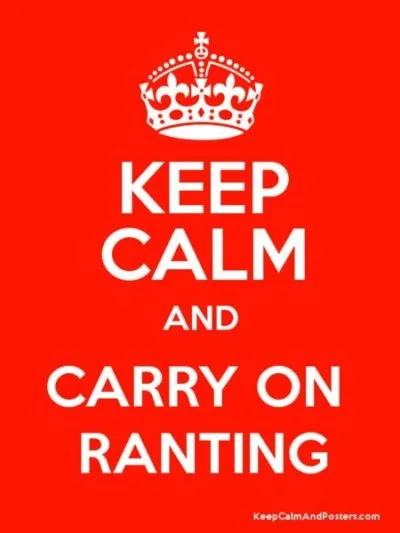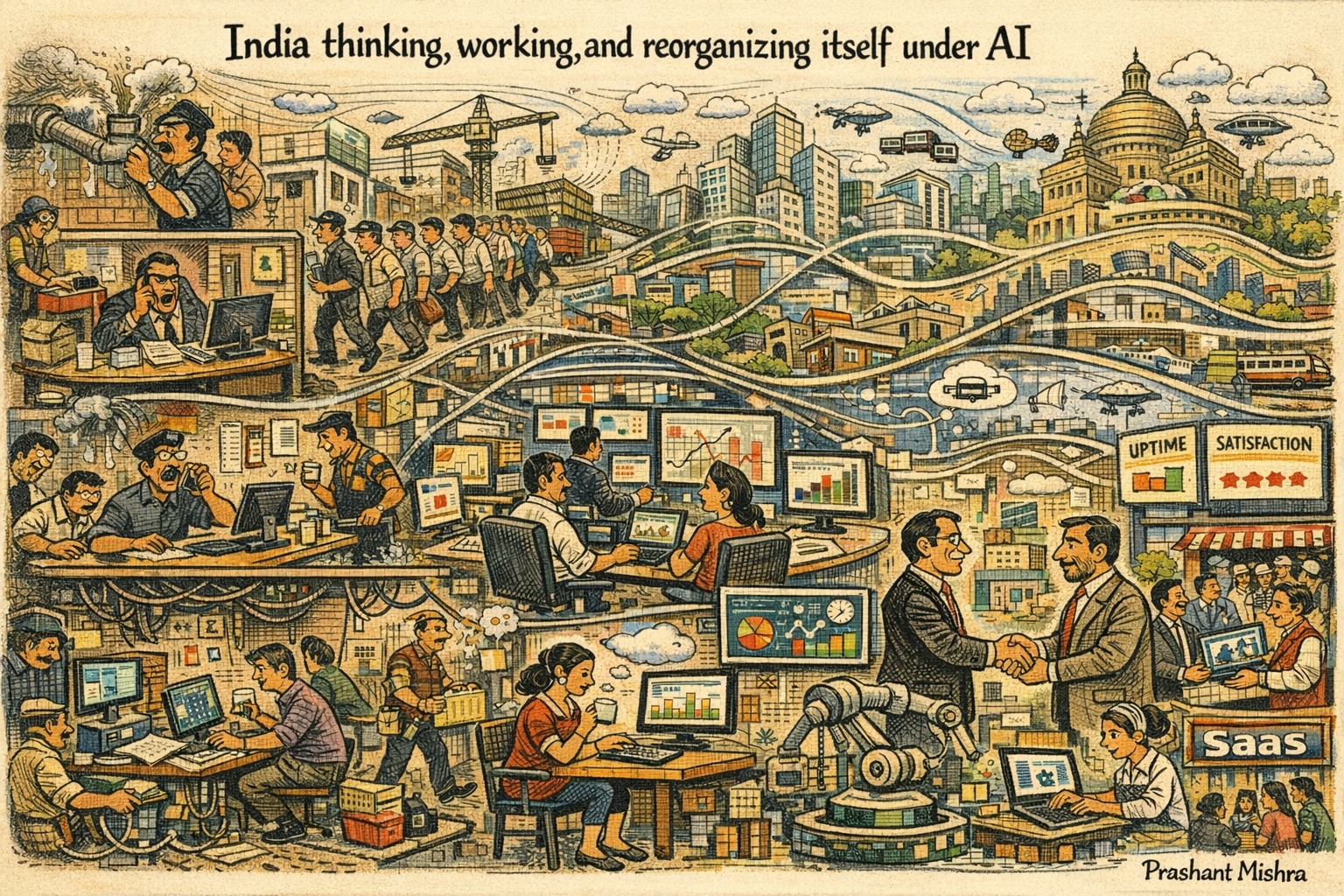
The futility of LinkedIn – Or is it just me?
Till about a couple of years ago, LinkedIn profiles with 1000+ connections impressed me immensely. With that humongous network and reach at their disposal, they’d have a world of opportunities on the platter. I checked their profile to see what made them popular or ‘connection-worthy’. I secretly emulated their style, their profiles, and other aspects of their persona.
Last weekend, I pruned my contact list and ended up removing about 100s of connections and quite a few groups with the intent to eventually settle to a sober number, or better yet, log out completely.
How did it come to this?
In a world where distances and boundaries no longer matter and none of us has been left untouched by the digital disruption, In that world, a medium for professionals to connect and interact makes sense. Hence, the intention behind LinkedIn is a noble one, but its trajectory has been flawed.
Professional ‘interaction’ can be categorized into three somewhat overlapping sets: (1) expanding business or career opportunities; (2) exchanging ideas; and (3) disseminating views and opinions. Initially, LinkedIn was viewed as an advanced job-hunting site that only later became a medium to explore new business opportunities. While connecting and exchanging ideas may have occurred, the concept of knowledge sharing is relatively new. I can’t claim with absolute certainty, but my assessment is that in all categories, LinkedIn hasn’t met with true success or delivered on the goods.
Here are my reasons why:
Of the aforementioned three sets, (1) is characterized by its inherent partially online/partially offline nature, wherein the platform only provides a medium for parties to advertise, make first contact, and connect. However, for these interactions to become popular and to attain critical mass, break-through successes (if any) must be showcased in order to attract others and hence perpetuate the cycle. I have yet to see such success stories. Specifically on the job-hunt front, I see LinkedIn serving more as a second fiddle to professional recruitment firms. What more could a recruitment organization want other than a 'well-defined, third-party managed’ universe of professionals who proactively update their profiles? Thus, you will see employment postings that come not from hiring managers or organizations but from head-hunting firms that link back to jobs that are essentially posted on their websites. As members attempt to pursue such job opportunities, they stumble upon payment-based job services or similar experiences as traditional job hunts. Agreed, LinkedIn’s business model is to monetize on the network, which means that network growth benefits the organization (premium subscriptions, advertising, talent solutions). However, with no substantial value trickling down to members, coupled with bad experiences such as the one mentioned above, contempt gets created and propagated, undermining the credibility of the platform.
With such a large assembly of professionals on one platform, the ability to crowd-source ideas or to have a meaningful debate should be a no-brainer. I am sure that such discussions might be happening in isolated circles, but they aren’t exactly mainstream or ‘trending’. Compare that to Facebook. I am sure we all agree that on Facebook we have not just our professional connections (sometimes) but also our family and friends who might not fit into the professional lot. Yet somehow the most intriguing conversations are happening there (even on professional topics). In all fairness, the platform isn't solely responsible for this, although it does contribute to its sustainability. This is a specific manifestation of the broader cultural issue of adhering to politically correct standards. Any kind of open debate or conversation will dismantle much of the charade that the traditional corporate world really is. And it is this cultural flaw that partially defeats the purpose of LinkedIn, so while it becomes the boardroom, Facebook takes the role of the water cooler or the hallway. Trouble is, new ideas rarely spring out of boardrooms. It’s ironic that the very trend, i.e., digitalization, which brought LinkedIn into prominence, is also rapidly changing the tenets of the corporate world. Organizations’ ability to uphold formal, “stiff-upper-lip” hierarchical structures is ebbing away. The very perception of authority is transformed; decision-making and ideation processes are changing radically. So quietly profound yet powerful are these changes that if corrective action is not taken, organizations and networks that complement or mimic traditionalist structures may remain relevant for a while but will eventually become an anachronism.
Finally, on the knowledge-sharing aspect of LinkedIn, if my memory serves me correctly, this initiative began with LinkedIn's 'Invitation to Blog' program. I suspect it was a means to overcome the problem mentioned above. Also, it could’ve been aimed at revving up the waning interest of its members and, in the process, creating a huge amount of professional-grade content. But if one throws but a cursory glance at the posts floating around, it’s filled with never-ending, annoying, ad-nauseam ramblings of born-again Jack Welch-es who seem to have figured out everything about career, life, death, and beyond. And more often than not, most are recycled ideas. So, everyone is expressing their views on leadership. Everyone has three-four-seven-or-eleven career development points. Everyone has an anecdote to share about their passion. Everyone is aware of the skills necessary to influence others and advance in their careers. Everyone is a networking expert and has ready-to-use tips to help anyone else become one too. And just about everyone has been fired from a job and knows the exact trick to bounce back.
I’m no Facebook fanboy, but I sense an air of condescension when I read the comparison between Facebook and LinkedIn, where the latter is positioned as a ‘professional networking’ site boasting of white-collar experienced professionals with college degrees as members while the former is a 'social networking’ site for everyone else, from the CEO to the janitor (and their families and their pets).
Yet, more and more users are posting about current affairs (or issues pertaining to society or business) on Facebook; more and more videos or articles on innovative approaches, designs, or methods are showing up on Facebook; and more and more people are logging into Facebook to check out the news, business, and political links embedded in Facebook instead of news portals. Looking at this, one has to agree that the folks in Menlo Park seemed to have gotten something right.
On the other hand, the ever-increasing number of inspirational pictures, ‘comment if you are a genius’, ‘few people have figured this out’, and ‘Like if you are looking for a job in Timbuktu’ posts, along with ridiculously asinine puzzles on LinkedIn, is alarming. In the backdrop of the audience it caters to, i.e., ‘white-collared experienced professionals with college degrees’, this especially resembles a descent into chaos, which is probably what it probably is.
Maybe one of the reasons behind it is that the dominant group on LinkedIn is relatively older middle- or senior management (including, yours truly, the author). A majority of whom, while suffering from the cultural flaw mentioned in point (2) above, are (in any combination) also too proud, too insecure, too reticent, too unsure, or too clique- or region-oriented to share, collaborate, and support freely. This in turn sets the cue for other sub-groups, which follow suit, leading to an equilibrium network. Such networks are then susceptible to anyone using them for their intended purpose. Third-party recruiters, social media marketers, and pointless content propagators enter the picture, seeking to extract their share from a relatively captive, stagnant, yet influential audience.
Lastly, I understand that each idea passes through inception, expansion, plateau, and decline or transformation phases. My assessment tells me that LinkedIn has definitely arrived at its equilibrium, with members being incorrectly incentivized to increase their network but not to add value to it.
And, as I was trying to understand what corrective measures I could take, I came across a wonderful piece by Athena Vongalis-Macrow (Assess the Value of Your Networks, HBR 2012). I quote it here verbatim [only but slightly paraphrased], as I couldn’t have said it any better:
The strength of relationships between members and the contributions each member makes to strengthen ties can measure the strength of a network. Andrew Hargadon (Professor, Graduate School of Management, University of California, Davis) and Robert I. Sutton (Professor, Stanford Engineering School) identified three components that would make members valuable to any network: they were part pack rat, part librarian, and part Good Samaritan.
The pack rat provided a variety of resources for the creation of new and innovative ideas. The librarian brought information and knowledge. And the good Samaritan had the attitude and practice of sharing.
A network built on relationships between talented, knowledgeable, forward-looking, and supportive members is worth joining. If that relationship doesn’t exist, you may need to look elsewhere.”
The second-last sentence above captures what LinkedIn could be.
The last sentence captures my fear about the futility that LinkedIn could become.


